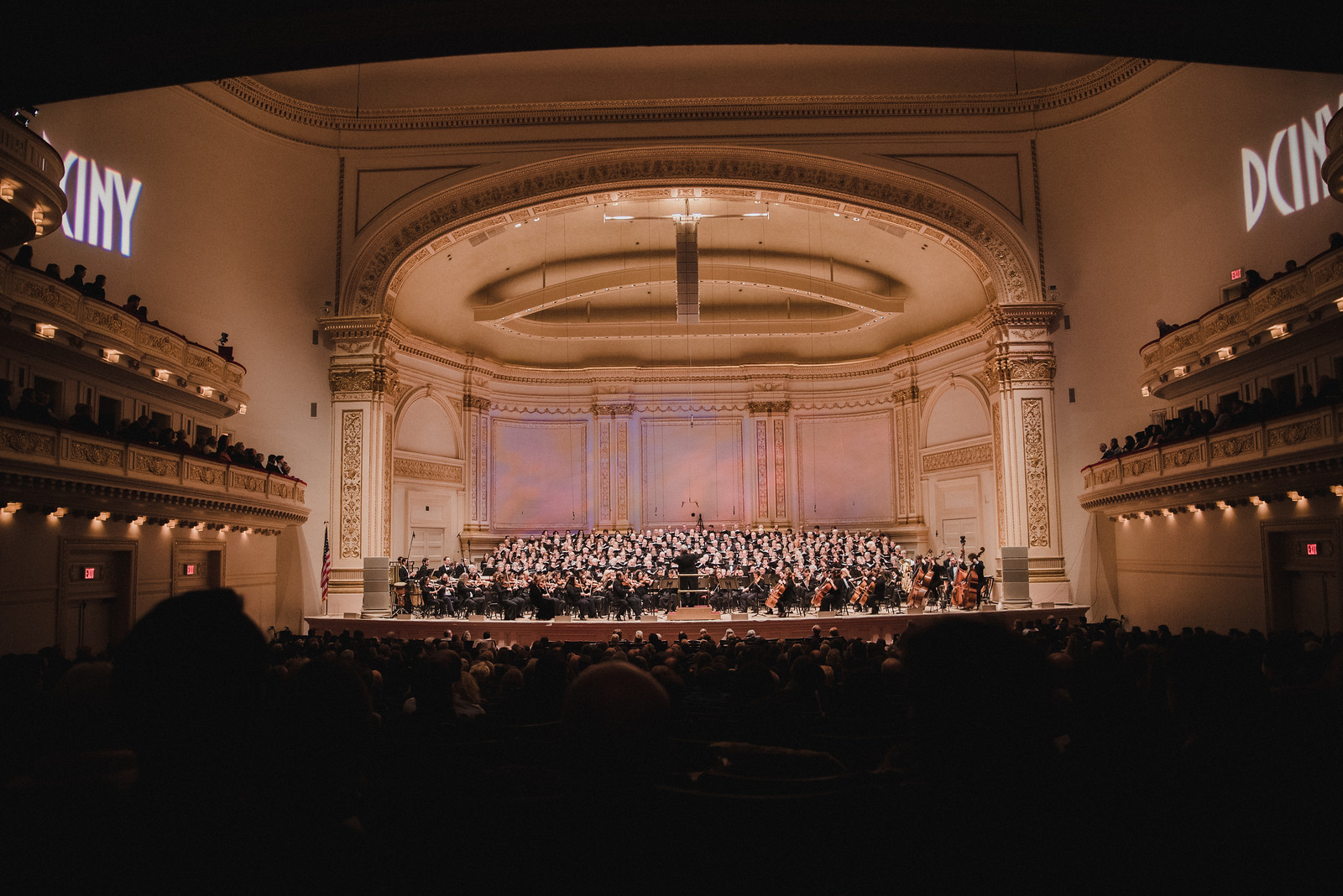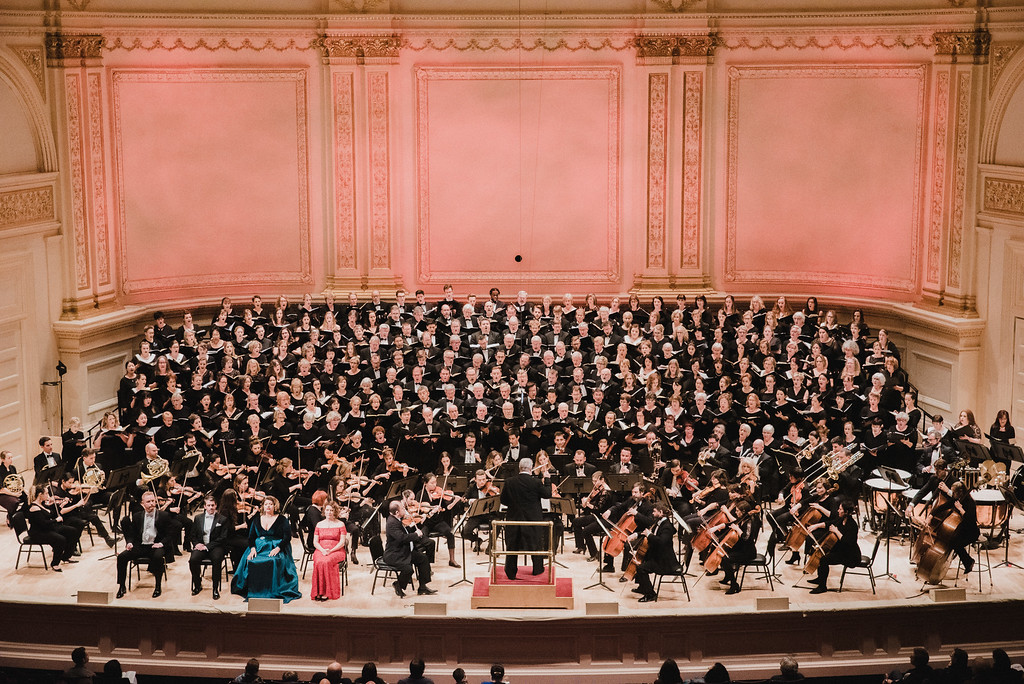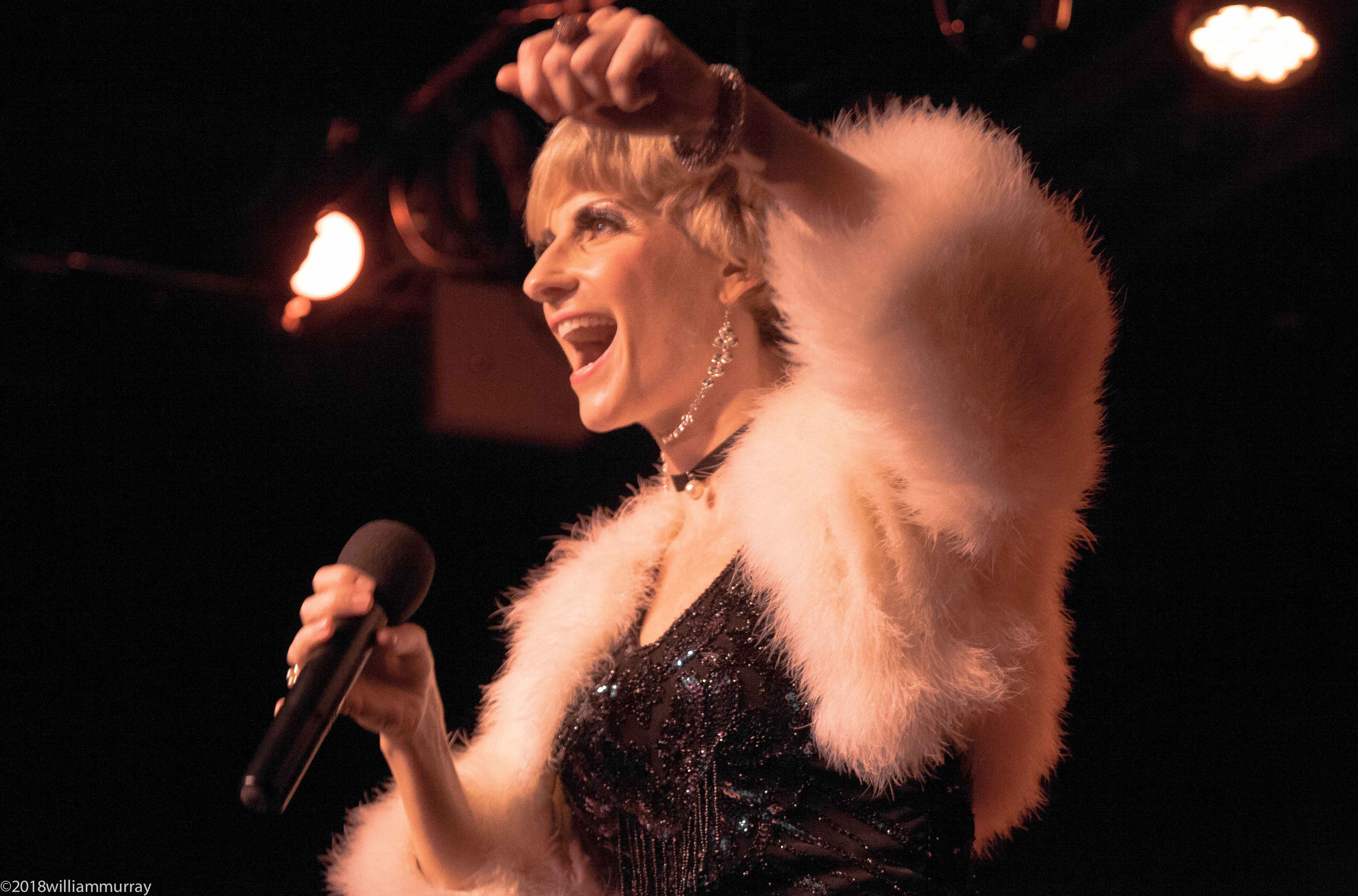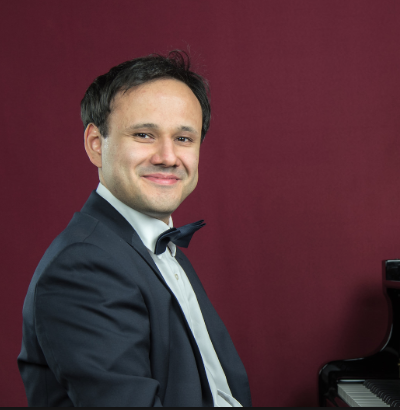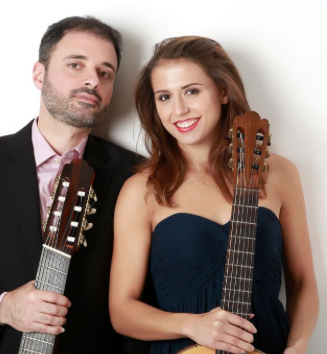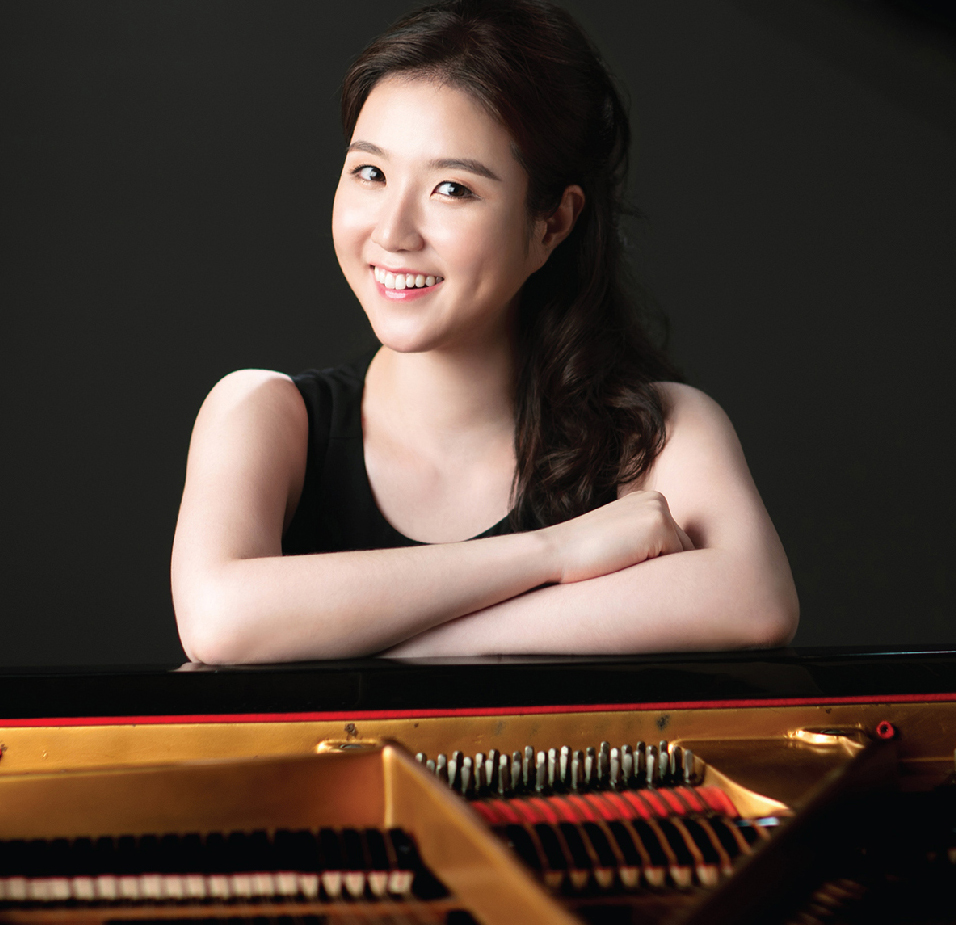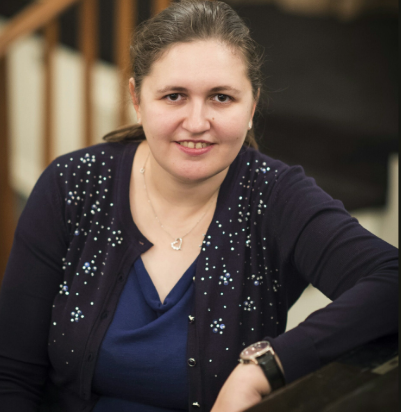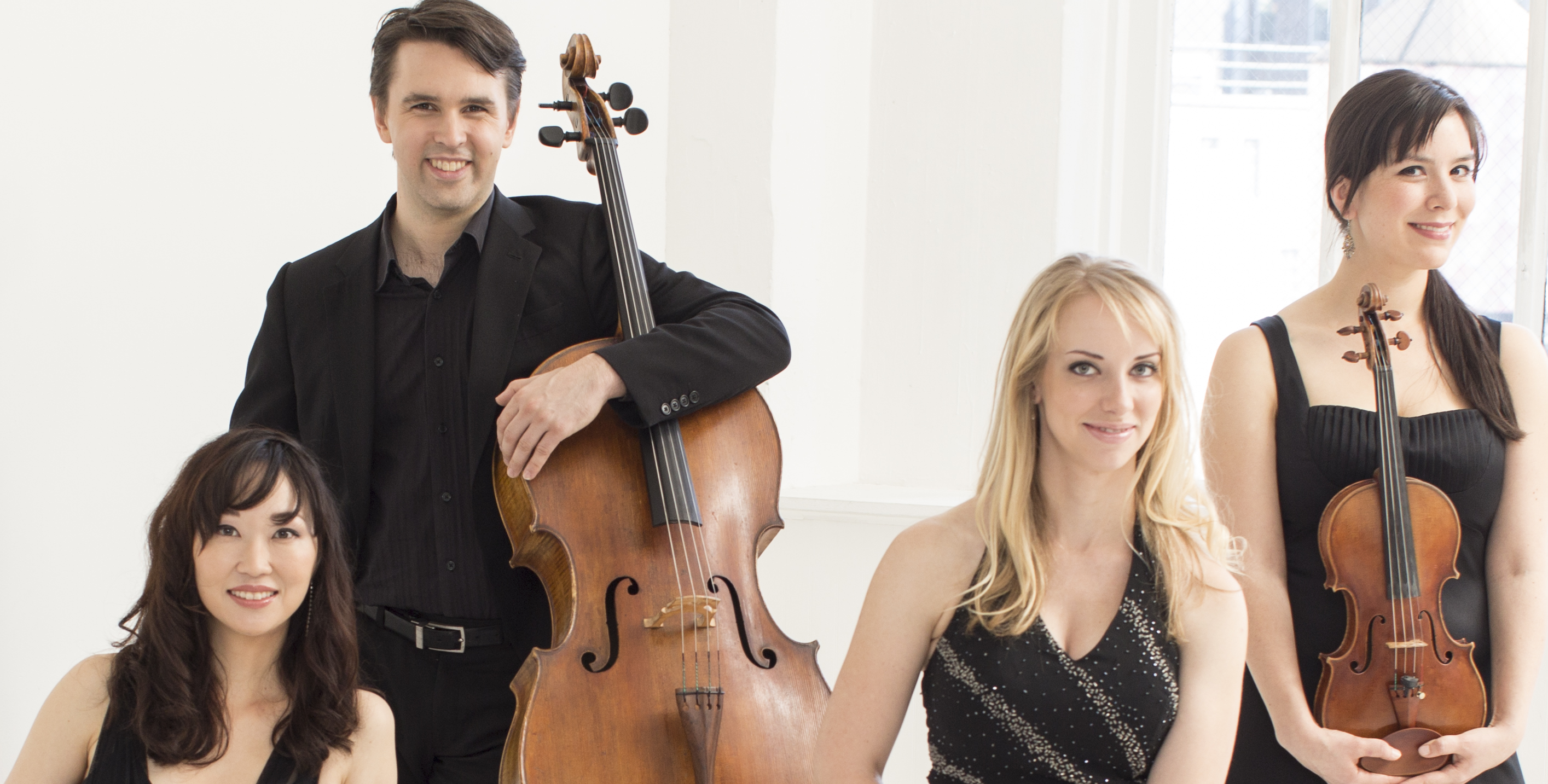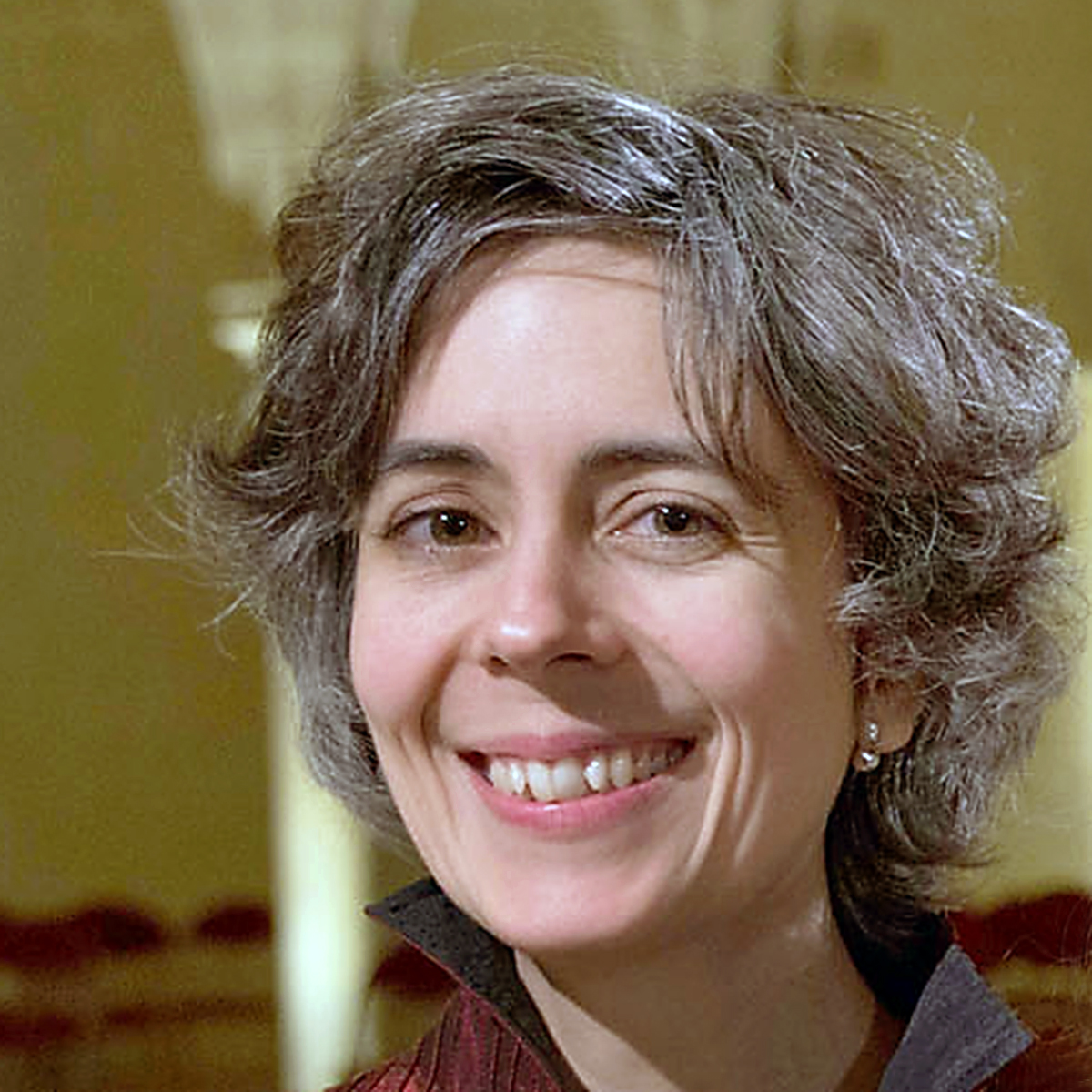Distinguished Concerts Orchestra, Distinguished Concerts Singers International,
Jonathan Griffith, Artistic Director and Principal Conductor,
Sir Karl Jenkins, CBE, DCINY Composer-in-Residence
Baidar Al Basri, Ethnic Music Vocalist; Sara Couden, Contralto
Elliott Forrest, WQXR Radio Personality
Stern Auditorium at Carnegie Hall, New York, NY
January 21, 2019
Distinguished Concerts International New York (DCINY) presented another spectacular musical celebration this past Monday on Martin Luther King Jr. Day, and the program featured two major choral works by Welsh composer, Sir Karl Jenkins, whose 75th birthday is marked this year. The first half consisted of the United States Premiere of his hour-long Symphonic Adiemus (including his 1995 Adiemus, reworked and augmented from its version for women’s voices to employ SATB, chorus, and an expanded orchestra). In the second half we heard his well-known Stabat Mater, for which this reviewer covered the United States premiere in 2009, six years before the composer was knighted (when New York Concert Review was still a print-only publication). I wrote then that his music was “direct, appealing, and at times profoundly moving” – and that opinion certainly holds today.
In an age when labels are applied with regularity to works of art as well as to people, the Symphonic Adiemus of Sir Karl Jenkins eludes classification. Though it is built on traditional classical forms, employs classically-influenced harmonies, and requires classically trained orchestral forces, the work is built over a nearly constant rhythmic undercurrent, often syncopated, which seems to invite the sloppy term “crossover.” Thanks to liberal use of African percussion (such as the djembe), Mideastern instruments (such as the riq), a chest-voice style of singing (marked with the word “tribal” in parts of the score), the terms “ethnic” and “world music” get slapped on as well, also not too helpful in an era of constantly intertwining cultures. As Sir Karl Jenkins himself acknowledged during an intermission interview from the stage, “I’ve always resisted categorizing music.” In fact, so averse is he to categories that he created his own language for his Adiemus, in lieu of established texts from any single nation or era.
As Sir Karl writes, “The text was written phonetically, with the words viewed as instrumental sound, the idea being to maximize the melisma … by removing the distraction, if one can call it that, of words. The sound is universal, as is the language of music.” On that premise, Symphonic Adiemus employs syllables text such as, “Za Ma Ba” and “Kayama” and in doing so largely avoids cultural associations and preconceptions. One could argue that “Adiemus” is a Latin word – and it is, of course – but, as Sir Karl recounts, the syllables “Ah-dee-ay-moos” simply emerged from the multitude of syllables, fortuitously corresponding to the Latin word for “we shall approach” (and close to “audiemus” or “we will hear”). As Sir Karl quips, “it could have been a lot worse!”
Musically, the twelve-movement Adiemus is beautifully paced to hold the attention of even the most restless audience – and just when one might be ready to pigeonhole a style or think a pattern formulaic, it all changes.
From the opening percussive blows of its first movement, In Caelum Fero (another case of phonetics emerging as Latin), one senses a heroic adventure ahead, and the brass and ostinati that follow are worthy of an epic soundtrack. One’s imagination supplies the story, especially with such a non-verbal choral part, but several hundred people making music onstage build a case for the hero being humanity itself.
The initial driving energy yields to the gentle Chorale: Za Ma Ba, with long-breathed melodic lines in the chorus and strings, and it is followed by the title movement, Adiemus, known to almost anyone who has been on the planet in the past decade. Associations have long been an issue for composers to reckon with (certainly exacerbated by technology, ringtones, commercial settings, etc.), but if “familiarity breeds contempt” the chant-like Adiemus is holding up quite well!
Nine movements follow, including the delightful Song of the Spirit with its almost raunchy horn licks, followed by Chorale: Elegia, which does not wax elegiac for too long before the ubiquitous rhythms return, now with gentle hand percussion. As if shunning too much of a lull, the next movement, Kayama, opens with a declamatory brass section before the chorus gently re-enters. Two movements entitled Tintinnabulum (parts I and II) follow, bringing the focus to tubular bells, and they provide a refreshing change of color. The highlight for this listener, though, is the ninth movement, Chorale: Cantilena, with its stately simplicity of line, and juicy suspensions and inner lines that tug at the heartstrings. A florid flute solo decorates its central section, and it was well performed. The orchestra throughout was excellent.
After the Cantilena comes Zarabanda, based loosely on the French Sarabande known for its emphatic second beat, but with its more distinctive rhythmic feature here being the constant percussive undercurrent. When the gently beatific Hymn begins after it, without percussion, it is a welcome respite. It is not easy to sustain excitement when there are so many climaxes of all sorts in a work, but thanks to the relative quiet of the Hymn, a resurgence is made possible, and the entire work comes to a rousing close with the Song of the Plains.
One couldn’t help thinking throughout the first half that the neutralizing of the text to mere syllables and the dissolution of certain musical categories are in perfect harmony with the mission of inclusiveness associated with the DCINY organization. DCINY gathers choruses from all over the world, and for this event they had singers from New York, Oregon, Australia, Canada, France, Germany, the Netherlands, Sweden, Switzerland, and the UK, and (as listed in the program) “individual Singers from around the globe.” DCINY regularly reminds potential choristers to come join them, and their extravaganzas frequently fill Carnegie Hall to capacity. It was inspiring to behold their hundreds of singers, old and young, of all stripes, visibly exhilarated by the music and energized by the guidance of Maestro Jonathan Griffith. They also represent the work of numerous choral conductors behind the scenes, and in tribute to one such outstanding choral conductor, Dr. Doreen Rao, DCINY brought her to the podium after intermission to present her with its Educator Laureate Award.
As impressive a feat as it is to create one’s own syllabic language, it is arguably much harder to set music to the Latin text of the Stabat Mater, which has a venerated tradition from Vivaldi and Pergolesi through Verdi, Poulenc, and the present century. Each composer will somehow reflect the musical language of his own era, and yet, irrespective of associations, he must compose in a way that can convey the timeless subject matter of the life of Jesus Christ and the Virgin Mary.
If one found oneself thinking that some of the Jenkins Sancta Mater seems a bit too redolent of our own day’s epic film scores – one could carp similarly about the Sancta Mater of Rossini, who lets the word “crucifixi” roll just a bit too merrily off the tongue, as if imitating the finesse of his great influence, Mozart. Looking at the bigger picture, the fact is that Sir Karl Jenkins followed his inspiration, and his Stabat Mater goes beyond the European tradition to resembling, as a whole, no other piece.
The central Latin texts are surrounded with those in English, Hebrew, Arabic, Greek, and Aramaic, and include words from the Epic of Gilgamesh and the poet Rumi. The texts are highlighted with the exotic timbres of Arab percussion instruments, which create evocations of the Holy Land. These were used especially effectively in conjunction with pizzicato strings in the eighth movement, Virgo Virginem.
Both chorus and orchestra deserve high praise for stamina as well as overall musicianship. The concertmaster, Jorge Ávila, was as ever an MVP, and Maestro Jonathan Griffith held the masses together in a way that could be described as miraculous. At times, he appeared to be the musical diplomat mediating between the unforgiving precision of the percussion and the giant amoeba of combined choruses – and there were precarious moments – but he was unfailing.
The soloists of the evening were also exceptional. The impassioned “ethnic vocals” of Baidar Al Basri made the second movement, Incantation, memorably stirring – and this listener had originally heard Belinda Sykes, who set a very high bar. Sara Couden’s beautifully penetrating contralto voice was also a discovery, and her superb diction brought clarity to the despairing fourth movement Lament, with text by Carol Barratt (Sir Karl’s wife).
All in all, one was struck once again by what a formidable achievement it all represented. Bravo to DCINY, to all the performers, and to Sir Karl Jenkins – happy birthday, and many happy returns!

